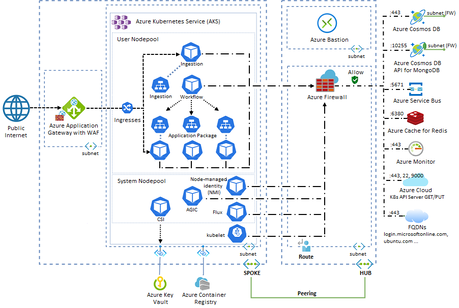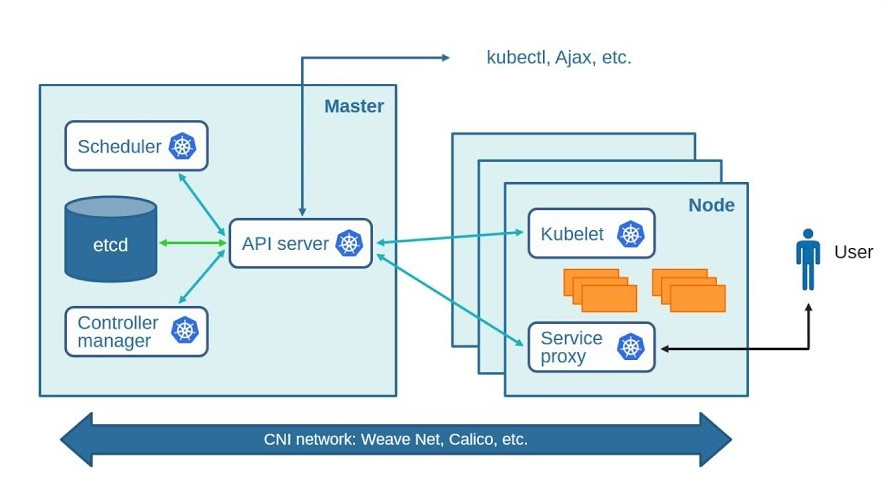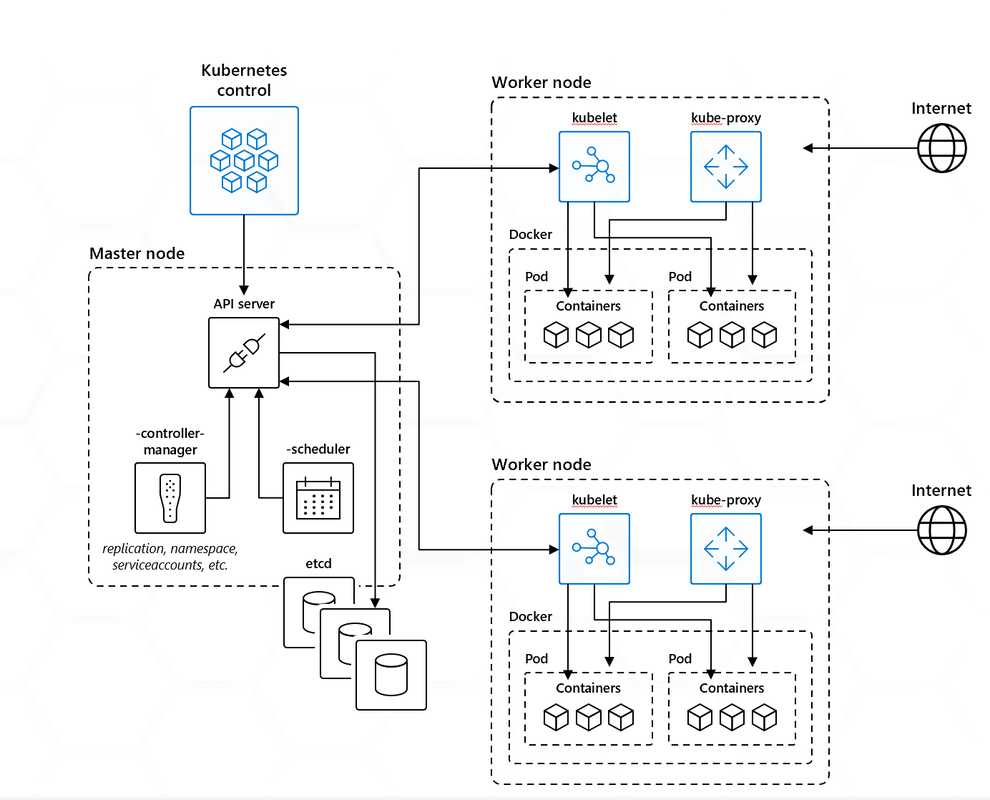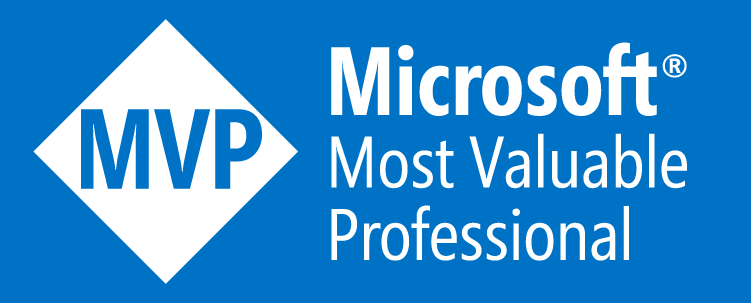|
Let's start with the definition of Kubernetes, so what is Kubernnetes (K8S), kubernetes is an open source container orchestration framework which was originally developed by google
Which basically means that, kubernetes helps you manage applications that are made up of hundreds or maybe thousands of containers and it helps you manage them in different environments like physical machines, virtual machines or cloud environments or even hybrid deployment environments. Why K8s?
Kubernetes is a cluster-based orchestrator, hence instead of having a single machine, it uses several machines working as one. These are called nodes. Can be virtual or physical machine In K8s cluster we will find two types of nodes:
Node Componentes: Master Node:
How kubernetes Work:
So, how to create or manage K8s resources, actually there are multiple ways to achieve that and the easiest way to achieve that is by using the Manifest file (Yaml) A Kubernetes manifest file allows you to describe your workloads in the YAML format declaratively, also the manifest files contain all the information that's needed to create and manage the described workload. The structure of manifest files differs depending on the type of resource that you create. apiVersion: apps/v1 What's next?
This was part one of the article. In the next part, we will continue this discussion with K8s services,AKS, etc. Continue Reading: AKS From Zero To Hero - Part 2
1 Comment
Samieo
3/30/2022 04:41:10 pm
thank you
Reply
Leave a Reply. |
Author
Mohammad Al Rousan is a Microsoft MVP (Azure), Microsoft Certified Solution Expert (MCSE) in Cloud Platform & Azure DevOps & Infrastructure, An active community blogger and speaker.
Al Rousan has over 8 years of professional experience in IT Infrastructure and very passionate about Microsoft technologies and products. Top 10 Microsoft Azure Blogs
Archives
September 2023
Categories
All
|





 RSS Feed
RSS Feed
